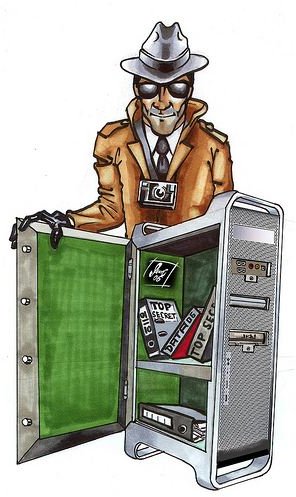The Nuclear Option to Virus Removal - Wiping the Computer Hard Drive
Virus Infection
Sometimes a computer virus has created so much mayhem that removing the virus requires drastic measures. Some options include wiping the hard drive, by doing a reformat, or doing a system restore. While these and other similar options are quite effective in removing viruses, they also cause the loss of user created files, which usually can’t be recovered except from backups. As a last resort try this solution for a computer infected fix - wiping the hard drive.
Wiping the Hard Drive
Computer virus removal tools are usually effective in cleaning computers of viruses, but sometimes it’s more convenient to reinstall the OS when a virus has completed trashed the OS. In instances where the entire computer is corrupted, using the ‘nuclear option,’ of wiping the hard drive clean, may be the best option. Here are three ways of doing so.
System Restore – Most computers that were built in recent times can be rolled back to the factory defaults using the “System Restore” files that are stored on a hidden partition, or by using an included Restore CD. As with other options, for wiping a hard drive, this option will remove any file, program, or configuration change that was made to the system since it left the manufacturer.
Fortunately, some system restore programs will offer an option to leave users files intact while they attempt to reset the OS and other factory defaults. The drawback to using this approach is that it leaves the computer vulnerable to be re-infected by the virus if the user files themselves are also infected.
Hard drive Image overwrites – In cases when an image of the hard drive or partition had previously been saved, using the saved image to overwrite the current one can easily solve the virus infection issue. This option involves using a software-cloning tool to create a 100% identical copy of a partition or hard drive as a backup/data recover measure. The advantage to using this option is that it preserves all user files that were saved in that image.
However, any change that was made to the files, since the image was created, will be lost. Also, any problem that had existed at the time the image was created, including having virus-infected files, will be reintroduced after the image is used to overwrite the current installation.
Hard Drive Reformat – If a clone image or system restore option isn’t available, the manual nuke option can always be attempted. It involves reformatting the hard drive and reinstalling the OS. Like the other options, all data and files that exist on the drive, or partition being formatted, will be lost.
Preventing Data loss in the Future
While operating systems, applications and computer drivers can be reinstalled, recovering user files that were lost in a hard drive wipe is nearly impossible, except with the use of advanced data recovery tools.
It is recommended that operating systems and user files be kept on separate partitions or hard drives and that regular backups be done. If these measures are used, should a need arise to remove a virus using the “nuclear option,” files can be restored from the backups, or the partition on which the operating system is stored can be wiped without affecting the user files that are stored elsewhere.
Summary
Using the nuclear option to wipe a hard drive and remove computer viruses is to be considered a last resort option, especially if user data is stored on the hard drive. However, the option is a good one for getting rid of viruses, especially in cases where backups were being made at regular intervals.
Image Credit: “The nuclear option virus removal -wiping a hard drive.” Sophos D/A/CH Pressinfo
